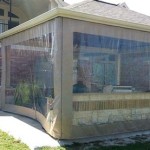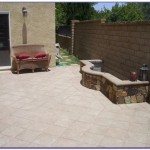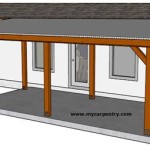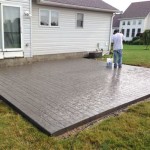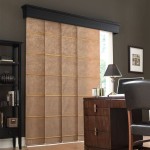Patio to Sunroom Conversion Cost: A Comprehensive Guide
Converting a patio into a sunroom can significantly enhance a property's value and provide a versatile living space. This project, however, involves a range of costs that homeowners should carefully consider before embarking on the renovation. The overall expense is influenced by several factors, including the size of the patio, the desired level of finish, the existing structure, and the geographical location. This guide provides a detailed overview of the various cost components associated with a patio to sunroom conversion.
Before delving into the specific expenses, it is crucial to differentiate between the types of sunrooms available. These distinctions directly impact the project's cost. A three-season sunroom, for example, is typically less expensive than a four-season sunroom due to differences in insulation and HVAC systems. A three-season room is designed for use during the milder months, while a four-season room is constructed to be comfortable year-round, regardless of external temperatures.
Another factor to consider is whether the project involves simply enclosing an existing patio or constructing a completely new structure. Enclosing an existing patio generally reduces costs, as the foundation and possibly the roof are already in place. Building a new structure from scratch, on the other hand, necessitates a greater investment in materials and labor.
Key Point 1: Initial Assessment and Design Costs
The initial stage of a patio to sunroom conversion involves a thorough assessment of the existing patio and the development of a detailed design plan. This process often includes consulting with architects, engineers, and contractors. The costs associated with this initial phase can vary significantly depending on the complexity of the project and the professionals involved.
Architect fees typically range from 5% to 15% of the total construction cost. Architects are responsible for creating detailed blueprints that adhere to building codes and zoning regulations. Their services may include site analysis, design development, and construction documentation. The complexity of the design and the extent of the architect's involvement will determine the final fee.
Engineering services may be required to assess the structural integrity of the existing patio and to ensure that the new sunroom meets all safety standards. Structural engineers can evaluate the load-bearing capacity of the foundation and recommend necessary reinforcements. This is particularly important if the sunroom will have a heavy roof or large expanses of glass. Engineering fees generally range from $500 to $2,000, depending on the scope of the assessment.
Contractor estimates are essential for understanding the overall cost of the project. It is advisable to obtain multiple estimates from different contractors to compare prices and services. Contractors will typically provide a detailed breakdown of the costs involved, including materials, labor, and permits. The cost of obtaining these estimates is usually free, but it is a valuable investment of time to ensure a comprehensive understanding of the project's financial implications.
Permit fees are another initial cost to consider. Building permits are required to ensure that the sunroom complies with local building codes and zoning regulations. The cost of permits varies depending on the location and the scope of the project. It is important to factor these fees into the overall budget to avoid unexpected expenses.
Soil testing may be necessary if the project involves significant excavation or foundation work. Soil testing can identify potential problems, such as unstable soil conditions or the presence of hazardous materials. The cost of soil testing typically ranges from $500 to $1,500, depending on the complexity of the analysis.
Key Point 2: Material Costs
Material costs represent a significant portion of the overall expense for a patio to sunroom conversion. The choice of materials will depend on the desired aesthetic, the budget, and the local climate. The cost of materials can fluctuate depending on market conditions and availability.
Framing materials are essential for constructing the structure of the sunroom. Common framing materials include wood, aluminum, and vinyl. Wood is a traditional choice, but it requires regular maintenance to prevent rot and insect damage. Aluminum is a durable and low-maintenance option, but it can be more expensive than wood. Vinyl is another low-maintenance option, but it may not be as strong as aluminum. The cost of framing materials can range from $2 to $5 per linear foot, depending on the material chosen.
Window and door costs can vary significantly depending on the type of glass, the frame material, and the size of the openings. Single-pane windows are the least expensive option, but they offer poor insulation. Double-pane windows are more energy-efficient and provide better sound insulation. Triple-pane windows offer the best insulation but are the most expensive. Window and door costs can range from $300 to $1,500 per unit, depending on the features and specifications.
Roofing materials are crucial for protecting the sunroom from the elements. Common roofing materials include asphalt shingles, metal roofing, and polycarbonate panels. Asphalt shingles are a cost-effective option, but they have a shorter lifespan than metal roofing. Metal roofing is durable and long-lasting but can be more expensive. Polycarbonate panels are a lightweight and translucent option that allows natural light to filter into the sunroom. Roofing material costs can range from $1 to $10 per square foot, depending on the material chosen.
Flooring materials play a significant role in the overall aesthetic and functionality of the sunroom. Common flooring options include tile, hardwood, laminate, and carpet. Tile is a durable and water-resistant option, but it can be cold underfoot. Hardwood is a classic choice that adds warmth and elegance to the space. Laminate is a cost-effective alternative to hardwood that is easy to maintain. Carpet is a soft and comfortable option, but it may not be suitable for areas prone to moisture. Flooring material costs can range from $2 to $20 per square foot, depending on the material chosen.
Insulation is essential for maintaining a comfortable temperature in the sunroom year-round. Common insulation materials include fiberglass, spray foam, and rigid foam board. Fiberglass is a cost-effective option, but it is less effective than spray foam. Spray foam provides excellent insulation and air sealing but is more expensive. Rigid foam board is a durable and water-resistant option that can be used in walls and roofs. Insulation costs can range from $1 to $5 per square foot, depending on the material chosen.
Key Point 3: Labor Costs and Additional Considerations
Labor costs constitute a substantial portion of the total expense for a patio to sunroom conversion. These costs encompass the wages paid to contractors, subcontractors, and other skilled workers involved in the project. Labor rates can vary depending on the location, the experience of the workers, and the complexity of the project.
General contractor fees typically range from 10% to 20% of the total construction cost. The general contractor is responsible for managing the project, coordinating subcontractors, and ensuring that the work is completed on time and within budget. Their fees cover their overhead expenses and profit margin.
Subcontractor fees can vary depending on the trade and the scope of the work. Subcontractors may be required for tasks such as framing, roofing, electrical work, plumbing, and HVAC installation. The cost of these services will depend on the complexity of the work and the prevailing labor rates in the area.
Electrical work is essential for providing power to the sunroom. This may involve installing new outlets, lighting fixtures, and wiring. A qualified electrician should be hired to ensure that the electrical work is done safely and according to code. Electrical work costs can range from $50 to $100 per hour, depending on the electrician's experience and the complexity of the work.
Plumbing work may be required if the sunroom will include a wet bar or a bathroom. This may involve installing new pipes, fixtures, and drains. A licensed plumber should be hired to ensure that the plumbing work is done correctly and according to code. Plumbing work costs can range from $75 to $150 per hour, depending on the plumber's experience and the complexity of the work.
HVAC installation is necessary for maintaining a comfortable temperature in the sunroom year-round, especially for four-season rooms. This may involve installing a new furnace, air conditioner, or heat pump. A qualified HVAC technician should be hired to ensure that the HVAC system is installed properly and according to code. HVAC installation costs can range from $3,000 to $10,000, depending on the type of system and the size of the sunroom.
Finishing details, such as painting, trim work, and landscaping, can add to the overall cost of the project. These details can significantly enhance the aesthetic appeal of the sunroom and make it a more enjoyable space. Painting costs can range from $2 to $4 per square foot, depending on the type of paint and the complexity of the work. Trim work costs can range from $5 to $10 per linear foot, depending on the type of trim and the complexity of the installation. Landscaping costs can vary significantly depending on the scope of the work.
Contingency funds should be set aside to cover unexpected expenses that may arise during the construction process. It is advisable to allocate 10% to 20% of the total budget for contingencies. Unexpected expenses can include unforeseen structural problems, material price increases, and delays caused by weather or other factors.
In conclusion, the cost of converting a patio to a sunroom is influenced by a multitude of factors, requiring careful planning and budgeting. Homeowners should conduct thorough research, obtain multiple estimates, and consider all the potential expenses before commencing the project. This will help ensure that the sunroom is completed on time, within budget, and to their satisfaction.

Sunroom Addition Cost To Build Fixr

How Much Does A Sunroom Cost To Build 2024

Converting Our Screened Porch To A Sunroom

What Does It Cost To Enclose A Porch Bankrate

How Do I Convert A Patio To Sunroom Strong Build

Converting A Screened Porch To Sunroom Sweet Pea

Patio Porch Conversions Sunroom Before And After Photos

Richmond Sunroom Conversion Converting Screened Porch To

Sunroom Addition Cost To Build Fixr

Sunroom Addition Cost
Related Posts

